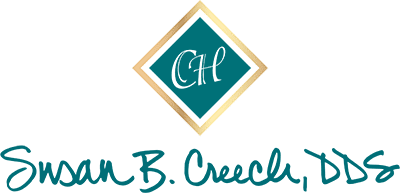TMJ is the joint that connects the lower and upper jaw. The term TMJ stands for Temporo-mandibular Joint. This is one of the most complex joints in the entire body, capable of forward and backward movement, rotations, and side-to-side movements. TMJ often refers to complications and problems with this joint. Some of the most common symptoms of TMJ problems are:
- Pain
- Limited movement of the lower jaw
- Clicking sounds
- Muscle spasms
- Locking of the jaw
Some potential causes of the disease include genetics, hormones, low-level infections, auto-immune diseases, trauma, and clenching or grinding of the teeth. Diagnosis and evaluation of such conditions are performed by dentists experienced in TMJ problems and treatments. Some common treatments are Night Guards, Bite Guards, and Bite Adjustments. Your dentist can guide you toward the best treatment for you.
If you experience any TMJ problems or symptoms please let us know. The doctor will be happy to evaluate your situation and offer the best treatment possible.
SELF-MANAGEMENT FOR TMJ AND JAW PAIN
We use our mouths for many activities: talking, eating, yawning, laughing, etc. When we are not engaged in these, we need to allow our jaw muscles and joints to relax. Many people have developed habits that do not permit their jaw muscles or joints to relax sufficiently. The steps listed below will help you learn how to relax these muscles and joints—and reduce the jaw pain you are experiencing.
1. Use hot or cold packs. Apply moist heat, ice or a combination of the two to the painful area(s). Most people prefer heat, but if that increases your pain, use either the combination or the ice alone.
- Apply moist heat for 20 minutes two to four times each day. OR
- Use the combination of heat and ice two to four times each day. OR
- Apply ice wrapped in a thin washcloth to the painful area until you begin to feel some numbness (usually in about 10 minutes), then remove it.
2. Eat soft foods. Confine your diet to soft foods such as casseroles, canned fruit, soups, eggs and yogurt. Do not chew gum or eat hard foods (such as raw carrots) or chewy foods (such as caramels, steak, or bagels).
3. Rest your jaw muscles. Keep your teeth apart and practice good posture.
- When you are not chewing, your teeth should never touch (except occasionally when you swallow). Closely monitor your jaw position for signs of clenching. Try placing your tongue lightly on the top of your mouth behind your upper front teeth, allowing the teeth to come apart and relaxing the jaw muscles.
- Good head, neck and back posture help you maintain good jaw posture. Try to hold your head up straight, and use a small pillow or rolled towel to support your lower back. Avoid habits such as resting your jaw on your hand or cradling the telephone against your shoulder.
4. Avoid caffeine. Caffeine stimulates your muscles to contract and, therefore, become more tense. Caffeine or caffeine-like drugs are in coffee, tea, most sodas, and chocolate. Decaffeinated coffee also has some caffeine.
5. Watch your habits. Avoid oral habits that put strain on the jaw muscles and joints. These include, among others, clenching the teeth; grinding the teeth (bruxism); touching or resting the teeth together; biting your cheeks, your lips or objects you put in your mouth; pushing the tongue against the teeth; and tensing the jaw.
6. Sleep smart. Avoid sleeping habits that strain your jaw muscles or joints. Do not sleep on your stomach, and if you sleep on your side, keep your neck and jaw aligned.
7. Do not open wide. Until the pain has been reduced, avoid activities that involve opening the jaw wide—yawing, yelling, prolonged dental treatments, etc.
8.Use medications. Use anti-inflammatory and pain reducing medications like Aleve (Syntex Laboratories), ibuprofen, Tylenol (McNeil Laboratories), aspirin (without caffeine) and Percogesic (Procter & Gamble) to reduce joint and muscle pain. Avoid medications with caffeine, such as Anacin (Whitehall), Excedrin (Bristol-Myers Squibb Company) or Vanquish (Glenbrook).
